Ground-breaking training breathes life into mangrove ecosystem restoration
A holistic mangrove management and restoration training to support Tanzania’s efforts to save its mangroves (now!)
Mangroves are one of the world’s richest and most important ecosystems, and their conservation is of the highest importance in ocean and coastal protection. A high rate of mangrove failure and inappropriate forestry approaches to mangrove restoration and conservation triggered Save our Mangroves Now! to conduct a coaching workshop for Tanzanian government agencies and civil society. This training introduced new techniques designed especially for the restoration of mangroves, suitable for groups or individuals involved with an area’s mangrove ecosystem.
Written by Dominic Wodehouse (MAP), Anthony Hobson (IUCN) & Anouk Neuhaus (WWF Germany)
Download the workshop report
The eye-opening approach takes a holistic view of these vital socio-economic ecosystems, including communication methods, mangrove management, and community engagement, even going so far as conflict management and resolution learned from other Tanzanian forestry conservation areas. This method, known as community-based ecological mangrove restoration (CBEMR), favours restoration as part of that holistic thinking. It is not simply theoretical training, as the instructors took the many participants to two different mangrove forests to illustrate how and why these new techniques truly worked.
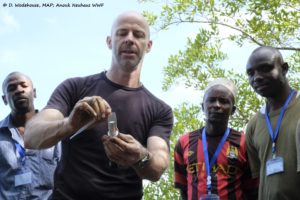
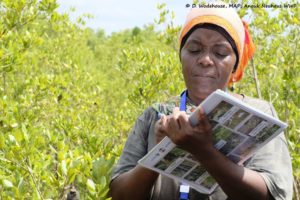
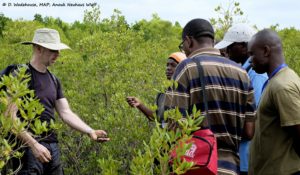
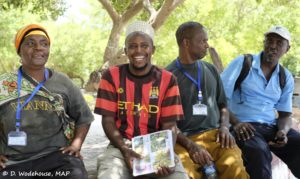
Photos: Dominic Wodehouse, MAP & Anouk Neuhaus, WWF
Addressing the right people for the specialist work
In Kenya, 2018, a scoping workshop of mangrove best practice gaps in the Western Indian Ocean region highlighted the important fact that many field-based forestry officials receive limited training on mangroves within their forestry college curriculums. Consequently, and unfortunately, general forestry management and silviculture approaches have been inappropriately applied to mangroves, mangrove restoration and the communities living around them. This was the catalyst for the Save our Mangroves Now! (SOMN) coaching workshop. The Tanzanian Forest Service Agency (TFS) instructors from the Forestry Training Institute, near Arusha, and TFS’s field staff were invited to the in-depth mangrove restoration training, and in keeping with the holistic principle, local community associations and local NGOs were invited as well.
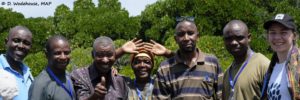
One of the cornerstones of SOMN’s approach is to share knowledge to scale up proven approaches and several key partners helped prepare the workshop. The lead logistical partner, the Tanzanian Forestry Conservation Group (TFCG), coached trainees on community engagement and conflict management in mangrove conservation and habitat restoration. A Rocha International was responsible for communication coaching and teaching techniques. Mangrove Action Project (MAP) was engaged to provide mangrove restoration training using its ‘Community-Based Ecological Mangrove Restoration’ CBEMR technique to the target groups.
A special technique for mangroves
MAP’s CBEMR is an alternative mangrove restoration technique developed to overcome the high rate of planting failure. The approach encourages project teams to work with local people to facilitate the natural regeneration of mangroves by restoring and improving the local hydrology and topography, while removing (or at least reducing) stressors to mangroves. There are many advantages to this system. It avoids the time and expense of building a nursery and planting nursery-raised seedlings or propagules, increases site biodiversity, and helps bring back the full complement of mangrove ecosystem services.
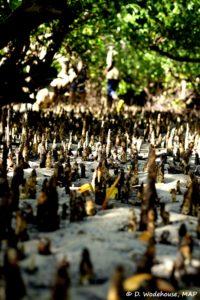
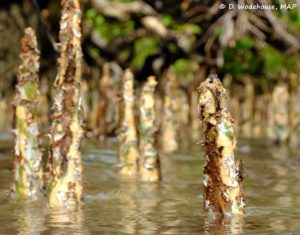
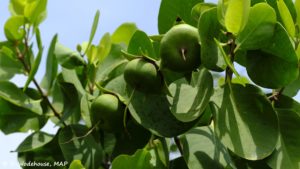
The key to the process
The participation of local people from the outset is critical, as is resolving the issues that caused the initial mangrove loss. All stakeholders must be involved, including government, NGOs, civil society organisations, community-based organisations, community members and private businesses (if adjacent to the site). Having a shared project objective and vision from the outset is most important.
“It is better to involve the communities’ local knowledge in the implementation.”
(Quote from a participant after the training in anonymous evaluation)
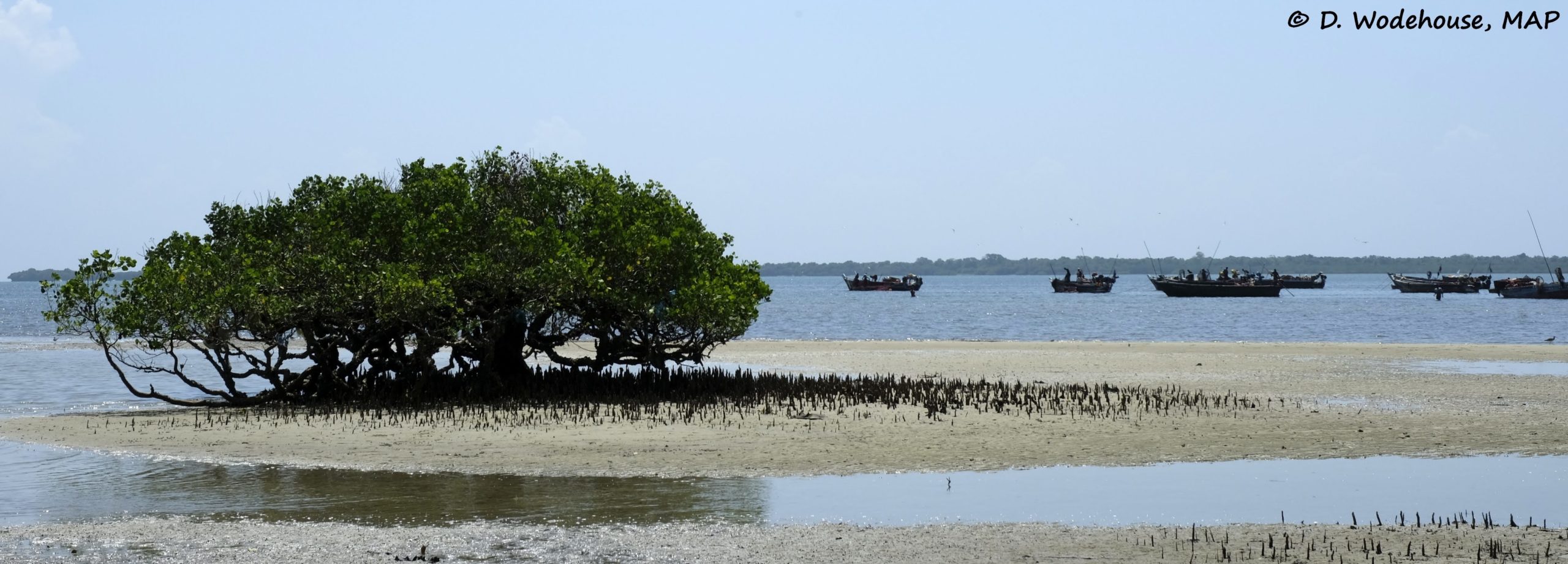
The training event
The training went through the steps of the CBEMR process, using photo-led discussions, field trips, small group discussions and participant presentations. It was well received by all participants. As one participant said,
“My expectation was to learn only about how to teach community to conserve the mangrove. But the experience went beyond that as we have learned many important things which I hadn’t understood before, e.g. hydrology, monitoring stressors and to avoid planting in mudflat!”
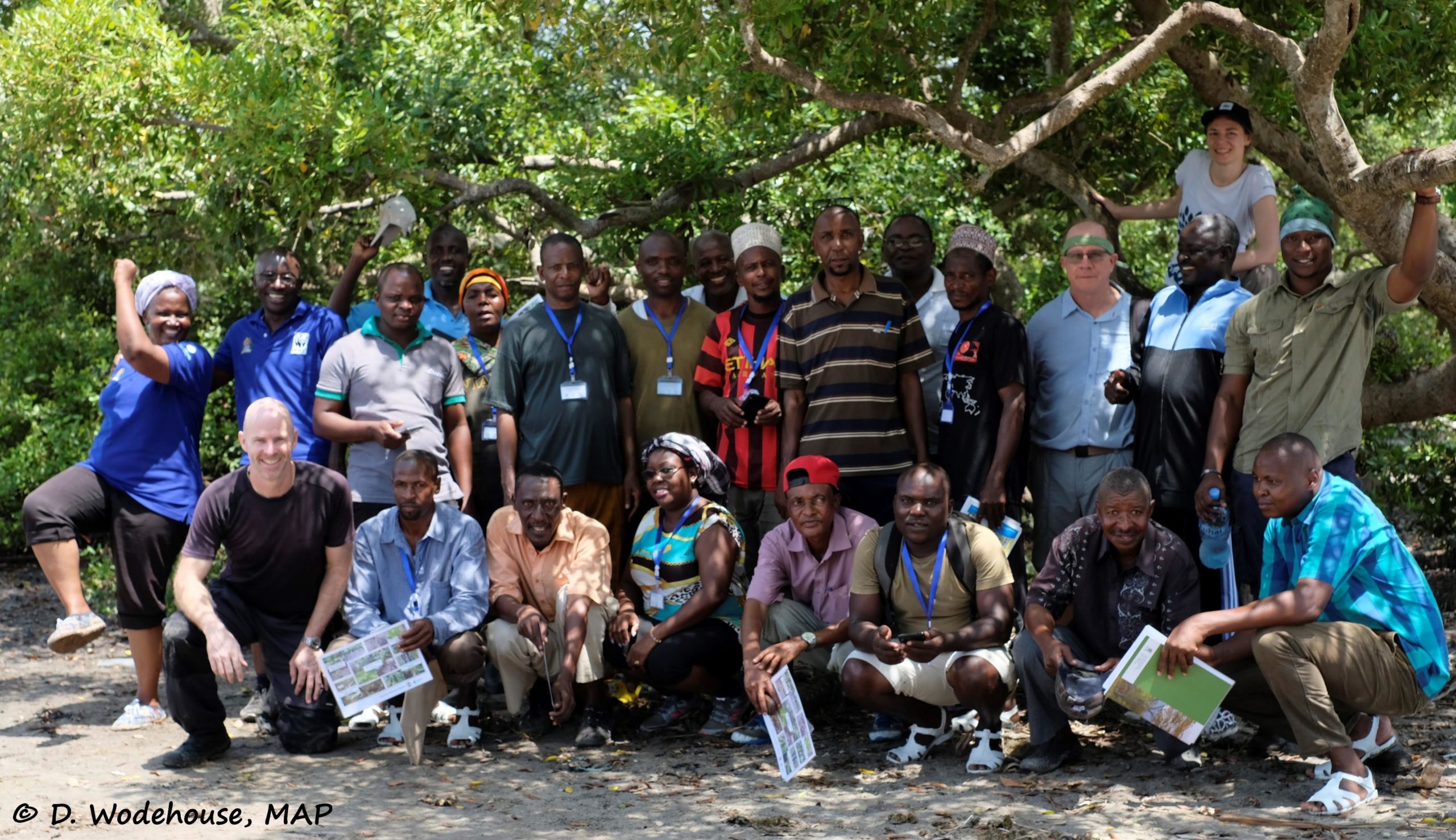
What’s next?
Participants universally gave feedback stating enthusiasm to share their new skills and knowledge with students and colleagues as well as adding a mangrove module to the curriculum at the Forestry Training Institute. Thanks to the “Training of Trainers” nature there is a good chance that new mangrove field staff in Tanzania will be trained using the CBEMR approach. Generally, a demand for future trainings of this nature was raised, including targeting government decision makers. Save Our Mangroves Now!, in it’s second funding cycle, is dedicated to increase national and regional policy advocacy for mangroves in the Western Indian Ocean region.
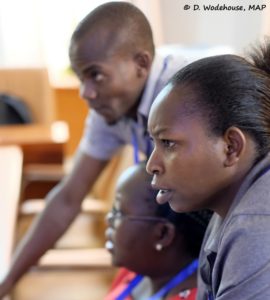
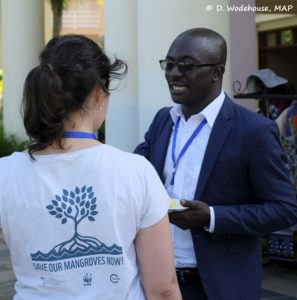
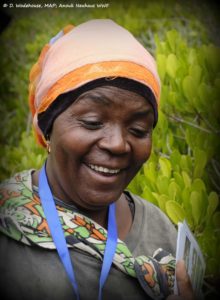
Download the workshop report